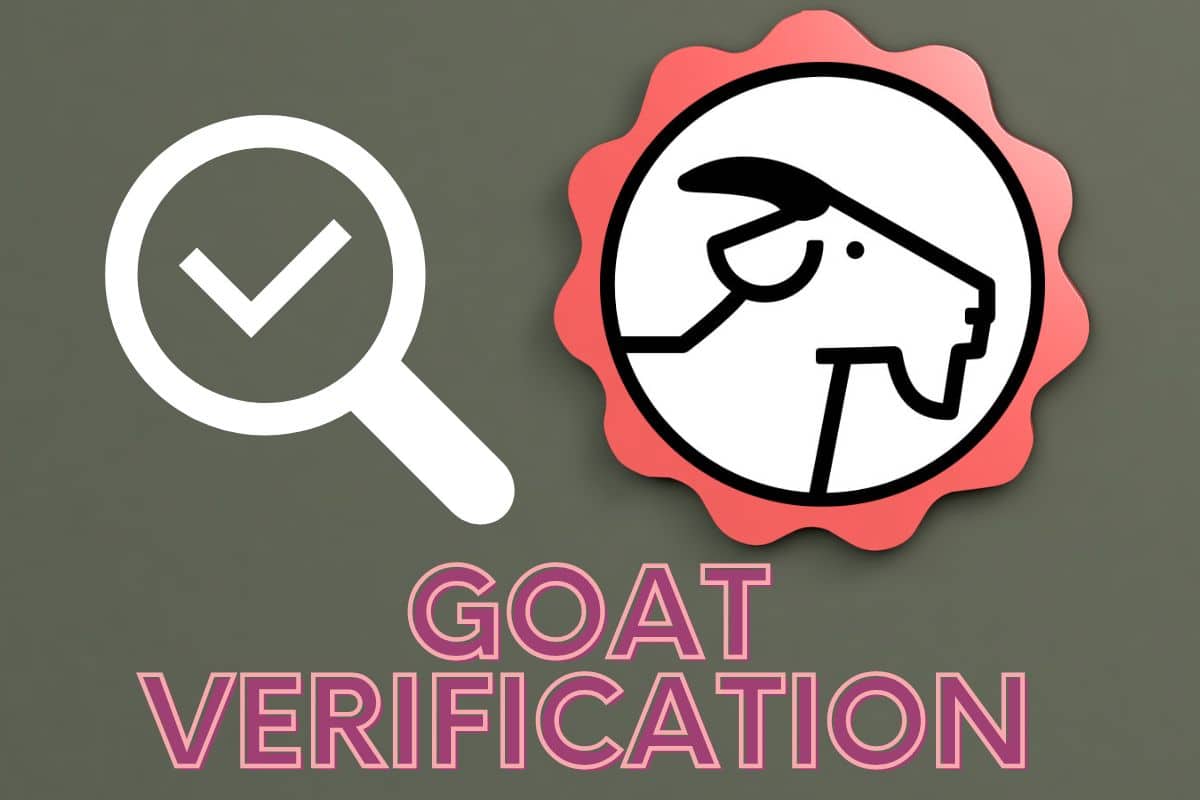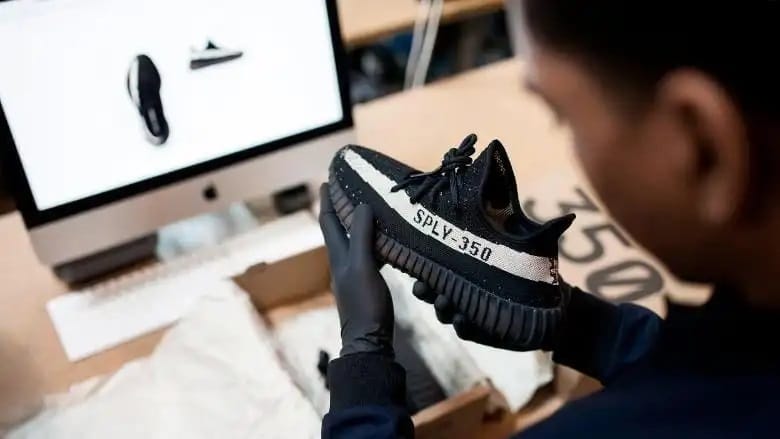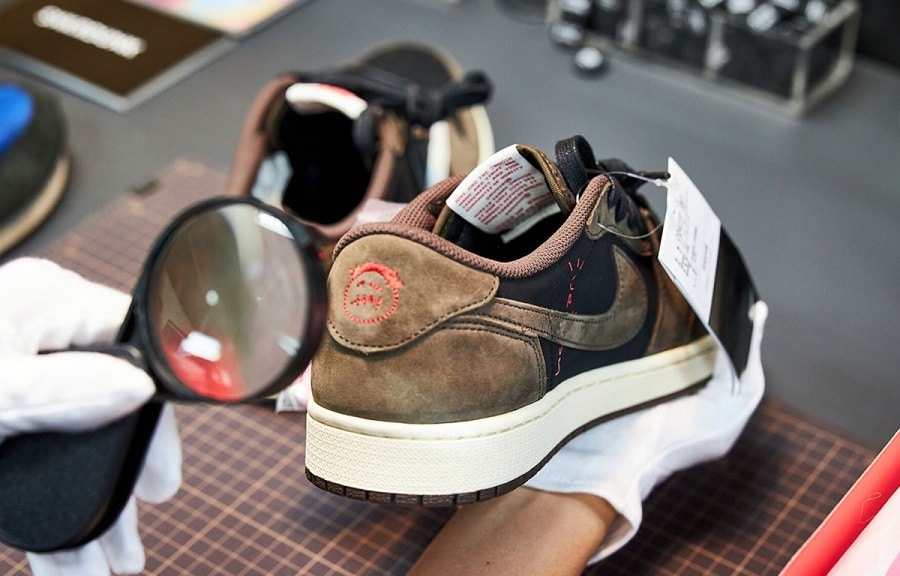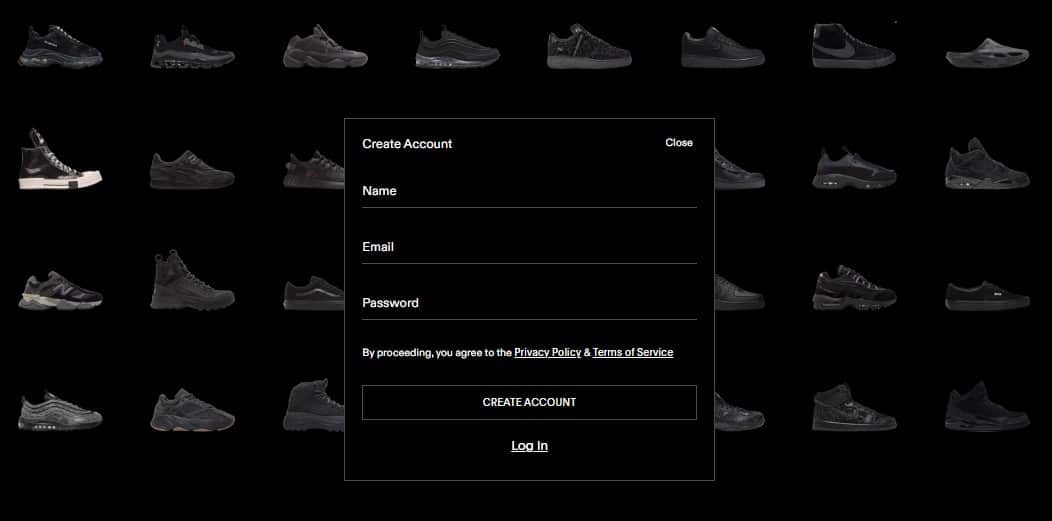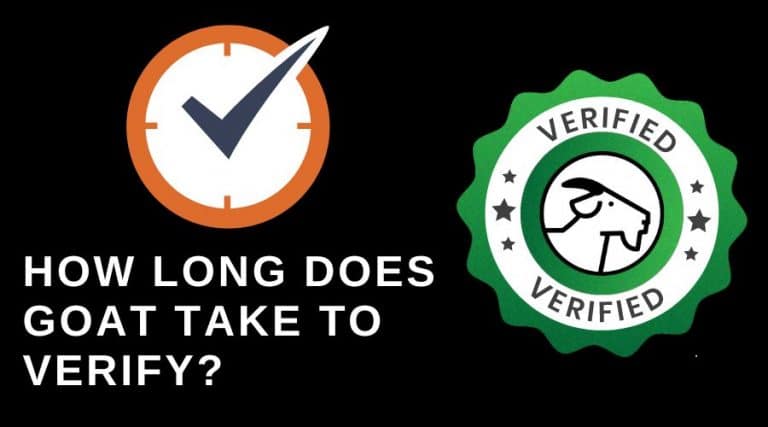What is GOAT and Why is Verification Important?
GOAT is a leading online marketplace for buying and selling sneakers, connecting buyers with sellers from around the world. With a vast selection of rare and limited-edition shoes, GOAT has become a go-to platform for sneaker enthusiasts. However, with the rise of counterfeit shoes, verification has become a crucial step in ensuring the authenticity of products sold on the platform.
Counterfeit shoes can be extremely convincing, making it difficult for even the most experienced collectors to spot a fake. That’s why GOAT’s verification process is essential in ensuring that the shoes sold on the platform are genuine. By verifying the authenticity of shoes, GOAT can prevent counterfeit goods from entering the market, protecting buyers from financial losses and sellers from reputational damage.
GOAT’s verification process is also important for maintaining the integrity of the sneaker market. By ensuring that only authentic shoes are sold on the platform, GOAT can help to prevent the devaluation of rare and limited-edition shoes. This, in turn, helps to maintain the trust and confidence of buyers and sellers, creating a positive and sustainable market environment.
For those looking to buy or sell sneakers on GOAT, understanding the verification process is essential. By knowing how long GOAT takes to verify shoes, buyers and sellers can plan accordingly, ensuring a smooth and efficient transaction process. In the next section, we’ll take a closer look at how GOAT’s verification process works, including the steps involved and the factors that can influence verification time.
How GOAT’s Verification Process Works
GOAT’s verification process is a multi-step procedure designed to ensure the authenticity of shoes sold on the platform. The process begins with the inspection of packaging, labels, and materials. GOAT’s team of expert authenticators carefully examines the shoe’s packaging, looking for any signs of tampering or irregularities. They also verify the labels and materials used in the shoe’s construction, ensuring that they match the manufacturer’s specifications.
Next, the authenticators conduct a thorough examination of the shoe itself, checking for any signs of wear, damage, or alteration. They also verify the shoe’s serial number, ensuring that it matches the manufacturer’s records. In addition, GOAT’s team uses specialized equipment to inspect the shoe’s materials and construction, looking for any signs of counterfeiting.
GOAT’s verification process also involves the use of expert authenticators who have extensive knowledge of sneakers and their authentication. These experts carefully examine the shoe, looking for any signs of counterfeiting or tampering. They also verify the shoe’s provenance, ensuring that it comes from a reputable source.
Once the verification process is complete, GOAT’s team provides a detailed report outlining the results of the inspection. If the shoe is found to be authentic, it is then listed on the platform for sale. If the shoe is found to be counterfeit or tampered with, it is removed from the platform and the seller is notified.
Understanding how GOAT’s verification process works is essential for both buyers and sellers. By knowing what to expect, buyers can have confidence in the authenticity of the shoes they purchase, and sellers can ensure that their shoes are properly verified and listed on the platform. In the next section, we’ll discuss the factors that can affect verification time and provide tips on how to expedite the process.
Factors Affecting Verification Time: What You Need to Know
Several factors can influence the verification time for shoes on GOAT. One of the main factors is the type of shoe being verified. Rare or limited-edition shoes may require more time and attention to verify, as they often have unique features or materials that need to be carefully examined. Additionally, shoes with complex designs or multiple components may also require more time to verify.
The seller’s location can also impact verification time. Sellers located in areas with high volumes of counterfeit activity may require additional scrutiny, which can slow down the verification process. Furthermore, sellers who are new to the platform or have a limited selling history may also be subject to more rigorous verification procedures.
The condition of the shoe can also affect verification time. Shoes that are in poor condition or have been altered in some way may require more time to verify, as GOAT’s team needs to carefully examine the shoe to ensure its authenticity. On the other hand, shoes that are in excellent condition and have all original packaging and documentation may be verified more quickly.
Another factor that can impact verification time is the time of year. During peak periods, such as holidays or special events, GOAT may receive a higher volume of submissions, which can slow down the verification process. Additionally, GOAT’s team may be more thorough in their verification procedures during these periods to ensure the authenticity of shoes.
Understanding these factors can help sellers prepare for the verification process and plan accordingly. By knowing what to expect, sellers can ensure that their shoes are properly prepared and submitted for verification, which can help to expedite the process. In the next section, we’ll provide a general estimate of the verification time and explain the different stages of the verification process.
How Long Does GOAT Take to Verify Shoes? A General Timeline
GOAT’s verification process typically takes between 3 to 7 business days, depending on the complexity of the verification and the volume of submissions. However, this timeframe can vary depending on the factors discussed in the previous section. In general, GOAT’s verification process can be broken down into several stages, each with its own timeline.
The first stage is the initial review, which typically takes 1-2 business days. During this stage, GOAT’s team reviews the submission to ensure that all necessary information and documentation are included. If any issues are found, the submission is returned to the seller for correction.
The second stage is the authentication process, which typically takes 2-3 business days. During this stage, GOAT’s team of expert authenticators carefully examines the shoe to verify its authenticity. This process may involve inspecting the shoe’s packaging, labels, and materials, as well as conducting research to verify the shoe’s provenance.
The final stage is the quality control process, which typically takes 1-2 business days. During this stage, GOAT’s team reviews the authenticated shoe to ensure that it meets the platform’s quality standards. If the shoe is found to be in good condition and meets the standards, it is listed on the platform for sale.
It’s worth noting that GOAT’s verification process may take longer for certain types of shoes, such as rare or limited-edition shoes. In these cases, GOAT’s team may need to conduct additional research or consult with experts to verify the shoe’s authenticity. Additionally, GOAT’s verification process may be delayed during peak periods, such as holidays or special events.
Understanding the general timeline for GOAT’s verification process can help sellers plan accordingly and ensure that their shoes are properly prepared and submitted for verification. In the next section, we’ll discuss common issues that may delay verification and provide advice on how to resolve these issues quickly.
Common Issues That May Delay Verification
While GOAT’s verification process is designed to be efficient, there are several common issues that may cause delays. Understanding these potential pitfalls can help sellers and buyers alike navigate the process more smoothly. Incomplete or inaccurate information is a leading cause of delays. This can include missing or incorrect documentation, such as receipts or certificates of authenticity. To avoid this issue, sellers should ensure that all necessary documents are included with their submission and that the information provided is accurate and up-to-date.
Another common issue that may delay verification is the submission of low-quality photos. GOAT’s authenticators rely on clear, high-quality images to verify the authenticity of shoes. If the photos provided are blurry, poorly lit, or do not show the necessary details, the verification process may be delayed. Sellers can avoid this issue by taking clear, well-lit photos of their shoes from multiple angles, including the packaging, labels, and materials.
In some cases, the verification process may be delayed due to the rarity or complexity of the shoe. For example, limited-edition or highly sought-after shoes may require additional scrutiny to ensure their authenticity. Similarly, shoes with complex designs or materials may require more time to verify. While these delays are unavoidable, sellers can minimize their impact by providing detailed information about the shoe and its history.
Finally, delays can occur if the seller’s location is not supported by GOAT’s verification process. GOAT has a network of verification centers around the world, but some locations may not be supported. Sellers can avoid this issue by checking GOAT’s website to see if their location is supported before submitting their shoes for verification.
By understanding these common issues, sellers and buyers can take steps to minimize delays and ensure a smooth verification process. While delays can be frustrating, they are often unavoidable. However, by being aware of the potential pitfalls, users can plan accordingly and ensure that their shoes are verified as quickly as possible. As a general rule, it’s essential to plan ahead and allow extra time for verification, especially for rare or complex shoes. By doing so, users can avoid delays and ensure a seamless buying and selling experience on GOAT.
GOAT’s Verification Process for Specific Shoe Brands
While GOAT’s verification process is standardized, there are some specific requirements and considerations for popular shoe brands. For example, Nike shoes require a thorough inspection of the shoe’s packaging, labels, and materials to ensure authenticity. GOAT’s authenticators will also verify the shoe’s serial number and check for any signs of tampering or alteration.
Adidas shoes, on the other hand, require a closer examination of the shoe’s stitching, logos, and branding. GOAT’s authenticators will also verify the shoe’s country of origin and check for any signs of counterfeiting. Additionally, Adidas shoes with special features, such as Boost or Primeknit technology, may require additional verification steps.
Vans shoes, known for their unique designs and collaborations, require a thorough inspection of the shoe’s materials, stitching, and branding. GOAT’s authenticators will also verify the shoe’s serial number and check for any signs of tampering or alteration. Vans shoes with special features, such as limited-edition designs or artist collaborations, may require additional verification steps.
Other popular shoe brands, such as Converse, Reebok, and New Balance, also have specific requirements and considerations for verification. GOAT’s authenticators will verify the shoe’s packaging, labels, and materials, as well as check for any signs of counterfeiting or tampering.
It’s worth noting that GOAT’s verification process for specific shoe brands may take longer than usual due to the additional requirements and considerations. However, this ensures that the shoes are authentic and meet the high standards of GOAT’s verification process. By understanding the specific requirements for each brand, sellers can better prepare their shoes for verification and ensure a smooth process.
In addition to the specific requirements for each brand, GOAT also has a team of expert authenticators who specialize in verifying specific types of shoes. For example, GOAT has a team of authenticators who specialize in verifying limited-edition sneakers, such as those released in collaboration with artists or musicians. These authenticators have extensive knowledge of the shoe’s design, materials, and production process, and can verify the shoe’s authenticity with a high degree of accuracy.
Tips for Sellers: How to Ensure Smooth Verification
To ensure a smooth verification process, sellers can take several steps to prepare their shoes for inspection. Proper packaging is essential, as it helps to prevent damage during shipping and ensures that the shoes arrive at GOAT’s verification center in good condition. Sellers should use sturdy, protective packaging materials, such as bubble wrap or foam inserts, to cushion the shoes during transit.
Accurate and complete documentation is also crucial for a smooth verification process. Sellers should include all relevant documentation, such as receipts, certificates of authenticity, and proof of purchase, with their submission. This helps GOAT’s authenticators to verify the shoe’s authenticity and ensures that the verification process is completed quickly and efficiently.
Effective communication with GOAT’s team is also important for a smooth verification process. Sellers should respond promptly to any requests for additional information or documentation, and should be available to answer any questions that GOAT’s authenticators may have. This helps to prevent delays and ensures that the verification process is completed as quickly as possible.
In addition to these steps, sellers can also take several other precautions to ensure a smooth verification process. For example, they should ensure that the shoes are clean and free of any damage or defects, as this can affect the verification process. They should also ensure that the shoes are properly labeled and identified, as this helps GOAT’s authenticators to verify the shoe’s authenticity.
By following these tips, sellers can help to ensure a smooth verification process and minimize the risk of delays or issues. This helps to provide a positive experience for both buyers and sellers, and ensures that GOAT’s marketplace remains a trusted and reliable platform for buying and selling sneakers.
It’s also important for sellers to be aware of the different types of verification that GOAT offers. For example, GOAT offers a “verified” label for shoes that have been thoroughly inspected and authenticated, as well as a “pre-verified” label for shoes that have been inspected but not yet authenticated. Sellers should understand the differences between these labels and ensure that they are using the correct one for their shoes.
By taking these steps and being aware of the different types of verification, sellers can help to ensure a smooth verification process and provide a positive experience for buyers. This helps to build trust and confidence in GOAT’s marketplace, and ensures that buyers can purchase sneakers with confidence.
Conclusion: What to Expect from GOAT’s Verification Process
In conclusion, GOAT’s verification process is a comprehensive and rigorous system designed to ensure the authenticity of sneakers sold on their platform. By understanding the factors that affect verification time, being aware of common issues that may delay verification, and following tips for smooth verification, sellers can help to ensure a positive experience for both themselves and their buyers.
GOAT’s verification process is an essential part of their commitment to providing a trusted and reliable marketplace for buying and selling sneakers. By verifying the authenticity of shoes, GOAT helps to prevent counterfeits and ensures that buyers receive genuine products. This, in turn, helps to build trust and confidence in the platform, making it a go-to destination for sneaker enthusiasts.
While the verification process may take some time, it is a necessary step in ensuring the authenticity of shoes. By being patient and providing accurate and complete information, sellers can help to expedite the process and ensure a smooth transaction. Additionally, by understanding the different stages of the verification process, sellers can better manage their expectations and plan accordingly.
Overall, GOAT’s verification process is a critical component of their platform, and it plays a vital role in ensuring the authenticity and quality of the shoes sold on their site. By following the tips and guidelines outlined in this article, sellers can help to ensure a smooth verification process and provide a positive experience for their buyers.
As a final note, it’s essential to remember that verification is an ongoing process, and GOAT continuously updates and improves their verification process to ensure the highest level of accuracy and authenticity. By staying informed and up-to-date on GOAT’s verification process, sellers can help to ensure a smooth and successful transaction.

